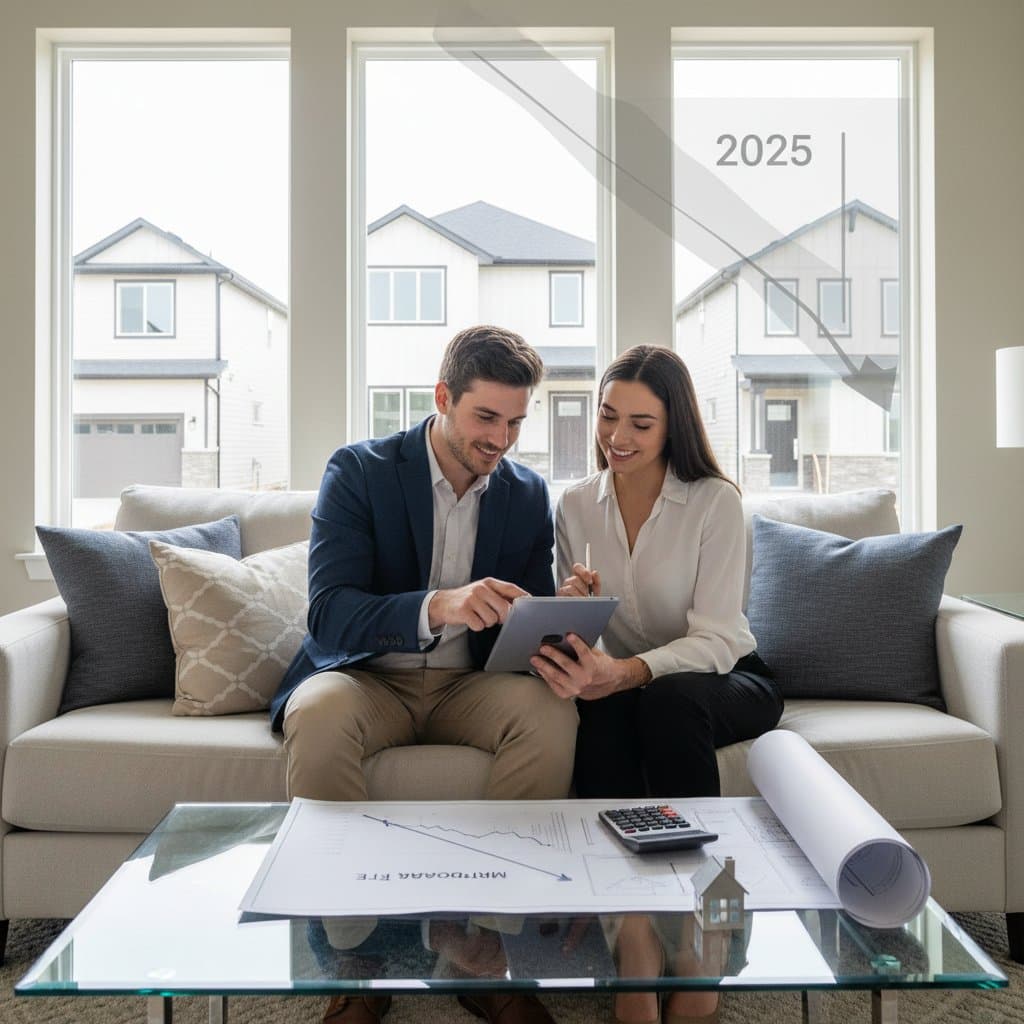TL;DR
- Builder rate buydowns restore affordability to new home purchases in 2025.
- Secure reduced payments for initial years or the entire loan duration.
- Pose targeted questions prior to commitment, as buydown terms vary significantly.
Understanding Builder Rate Buydowns
Builder rate buydowns represent a financial incentive where the homebuilder subsidizes a portion of the buyer's mortgage interest to lower the effective rate. This mechanism involves the builder providing a lump-sum payment to the lender, which functions as prepaid interest. As a result, the borrower's monthly payments decrease for a specified period or the loan's full term.
Consider a scenario with a base interest rate of 6 percent. A 2-1 buydown adjusts the rate to 4 percent during the first year, 5 percent in the second year, and returns to 6 percent thereafter. The builder assumes the cost of this rate differential, sparing the buyer any additional expense. This temporary adjustment eases the financial transition into homeownership, particularly in a high-rate environment.
Permanent buydowns offer a more sustained benefit, reducing the rate by 0.5 to 1 percentage point for the loan's duration. Such options prove advantageous for buyers intending long-term residency, as they minimize interest expenses over decades. Lenders typically structure these buydowns through points or premium payments funded by the builder, ensuring the buyer's qualifying rate reflects the reduced figure from the outset.
In my experience constructing a custom home, a temporary buydown provided essential flexibility. We refinanced after a few years once our finances stabilized. It gave us breathing room while we bought furniture and finished the yard. Honestly, it felt like a soft landing during a pretty stressful time.
Common Pitfalls to Avoid in Rate Buydown Agreements
Focus on long-term implications rather than immediate relief when evaluating a buydown. Short-term savings can mask underlying expenses that erode overall value. Review agreements meticulously to align incentives with your financial objectives.
Here are key considerations drawn from assisting numerous new homeowners:
-
Examine adjustment timelines closely. Request a detailed schedule from the lender outlining payment changes. An unexpected increase after the initial period can strain budgets if unprepared.
-
Clarify refinance implications. Determine whether unused buydown funds remain accessible if you refinance early. Certain programs forfeit remaining credits, potentially diminishing the incentive's value.
-
Scrutinize the home's base price. Builders occasionally incorporate buydown costs into the purchase price, spreading the expense across the mortgage. Calculate the net savings to confirm the deal's true affordability.
-
Evaluate multiple lending sources. Although builders recommend preferred lenders, obtain quotes from independent providers. These may offer superior terms when combining the buydown with other competitive rates or fees.
-
Prioritize home quality over incentives. A buydown does not compensate for an inflated price or construction flaws. Conduct thorough inspections and appraisals to ensure the property meets essential standards before finalizing.
-
Assess tax and eligibility impacts. Verify how the buydown affects mortgage interest deductions and loan qualification metrics. Some structures alter debt-to-income ratios, influencing approval outcomes.
Frequently Asked Questions on Builder Rate Buydowns
Q: Can builder buydowns integrate with additional incentives?
A: In most cases, integration is possible. Combine them with closing cost assistance, interior design allowances, or upgraded appliances. Always verify compatibility with the lender to avoid conflicts.
Q: Which is preferable, a temporary or permanent buydown?
A: The choice hinges on your housing plans. Opt for temporary if anticipating a refinance or income growth soon. Select permanent for stability if committing to the property long-term.
Q: Do buydowns apply exclusively to new construction?
A: Primarily, yes, as builders deploy them to promote unsold inventory. However, select lenders extend analogous programs to resale properties through seller concessions or specialized loans.
Q: Does a buydown influence loan approval?
A: It can facilitate approval for larger loans by basing initial qualification on lower payments. Lenders, nonetheless, assess affordability at the full rate to mitigate future default risks.
Q: What options exist if interest rates decline post-purchase?
A: Refinancing remains viable. Weigh potential savings against refinancing fees, such as origination costs and appraisals, to ensure the move yields positive returns.
Q: How do buydowns affect overall loan costs?
A: They reduce total interest paid during the subsidized period, but evaluate the builder's funding source. If embedded in the home price, the savings may offset partially over the mortgage term.
Strategies to Maximize Buydown Benefits
To leverage a builder rate buydown effectively, integrate it into a broader financial plan. Start by modeling payment scenarios using online calculators to project cash flow under various rate paths. Consult a financial advisor to align the buydown with goals like debt reduction or investment growth.
Negotiate terms proactively during the contract phase. Request extensions on temporary buydowns or enhancements to permanent ones if market conditions favor buyers. Document all agreements in writing to prevent misunderstandings.
Monitor economic trends post-purchase. If rates fall significantly, time your refinance to capture additional savings. By treating the buydown as a strategic tool rather than a standalone perk, you position yourself for sustained homeownership success and financial resilience.
